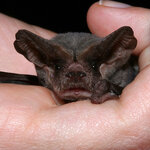Ecology & Zoology

Anyone who has thrown a backyard barbecue knows that hot dogs are inexplicably packaged in different numbers than buns — eight hot dogs per pack versus 10 hot dog buns. Put in ecological terms, this means that weenie roasts are “hot-dog limited” — the extra buns are worthless without hot dogs to fill them.
Such limiting factors are a cornerstone of natural ecology, where phosphorus or nitrogen limits plant production in most ecosystems. According to the customary model, the relative importance of these two key nutrients varies by ecosystem; but a group of researchers led by Arizona State…

An international team of scientists has published a new analysis showing that as plant species around the world go extinct, natural habitats become less productive and contain fewer total plants –– a situation that could ultimately compromise important benefits that humans get from nature.
“The process by which plants grow and produce more plant biomass is one of the most fundamental biological processes on the planet,” said Bradley Cardinale, lead author of the paper and assistant professor of biology at the University of California, Santa Barbara.
Plant productivity regulates the ability…

Vampire bats, the only mammals to feed exclusively on blood, including human blood, recognize their prey by the sound of its breathing. In a study published today in the open access journal BMC Biology, vampire bats of the species Desmodus rotondus could recognise recorded human breathing sounds much better than human participants could.
Vampire bats feed on the same prey over several nights and the authors of the study propose that the bats use breathing sounds to identify their prey in the same way as humans use voice to recognise each other.
In a study conducted by Udo Groeger and Lutz…

Cornell archaeologists are rewriting history with the help of tree rings from 900-year-old trees, wood found on ancient buildings and through analysis of the isotopes (especially radiocarbon dating) and chemistry they can find in that wood.
By collecting thousands of years worth of overlapping tree rings, with each ring representing a tree's annual growth, the researchers have created long-term records in the eastern Mediterranean that allow them to precisely date such seminal milestones in history as when Hammurabi, "the law-giver," reigned, when the massive Santorini volcanic eruption…

An international team of scientists has overturned an ecological study on how some animals search for food. Previously it was believed that wandering albatrosses and other species forage using a Lévy flight strategy - a cluster of short moves connected by infrequent longer ones. Published this week in the journal Nature, the team discovered that further analyses and new data tell a different story for the albatrosses and possibly for other species too.
Biologists and physicists identified ‘Lévy flights’, which are named after the French mathematician Paul Pierre Lévy and are a type of random…

Sugars made by plants are rapidly used by microbes living in their roots, according to new research by Professor Peter Young of the Department of Biology at York and Dr Philippe Vandenkoornhuyse of the University of Rennes, creating a short cut in the carbon cycle that is vital to life on earth.
The green leaves of plants use the energy of sunlight to make sugar by combining water with carbon dioxide from the atmosphere. This sugar fuels the plant’s growth, but scientists in the University’s Department of Biology discovered that some of it goes straight to the roots to feed a surprising…

Shiny amber jewelry and a mucky Florida swamp have given scientists a window into an ancient ecosystem that could be anywhere from 15 million to 130 million years old.
Scientists at the University of Florida and the Museum of Natural History in Berlin made the landmark discovery that prehistoric aquatic critters such as beetles and small crustaceans unwittingly swim into resin flowing down into the water from pine-like trees. Their findings are published this week in the Proceedings of the National Academy of Sciences.
The resin with its entombed inhabitants settled to the bottom of the swamp…

Bats are the most vocal mammals other than humans, and understanding how they communicate during their nocturnal outings could lead to better treatments for human speech disorders, say researchers at Texas A&M University.
Thousands of bats native to Central Texas fly overhead each night singing songs of complex syllables – but at frequencies too high for humans to hear.
Texas A&M researcher Michael Smotherman is trying to understand how Mexican Freetail bats organize syllables into songs and how their communication is linked to the brain.
Mexican Freetail Bat up close. Credit: J.E.…

Researchers from Kent State University and the University of Bucharest, Romania, have discovered a new primitive crab species Cycloprosopon dobrogea in eastern Romania. Previously unexamined, these ancient crabs from the Prosopidae family existed more than 150 million years ago during the Jurassic period.
“Studying primitive and extant crabs helps determine various aspects of biodiversity and patterns of evolution, such as when arthropods diversified,” says Dr. Carrie Schweitzer, associate professor of geology at Kent State University. Arthropods, which include crabs, insects, lobsters,…

The following is a major report that I compiled while being assigned a project to develop strategies to improve the ecosystem of the Great Barrier Reef.
ABSTRACT
Aquatic biomes possess some of the most diverse organisms that have ever been seen on planet Earth. Its biodiversity extends from the intriguing array of mollusks that inhabit the shallow rivers of the world to the mysterious cephalopods that roam the deepest regions of the ocean floor. But nowhere is aquatic biodiversity its richest but in the Coral Reef…